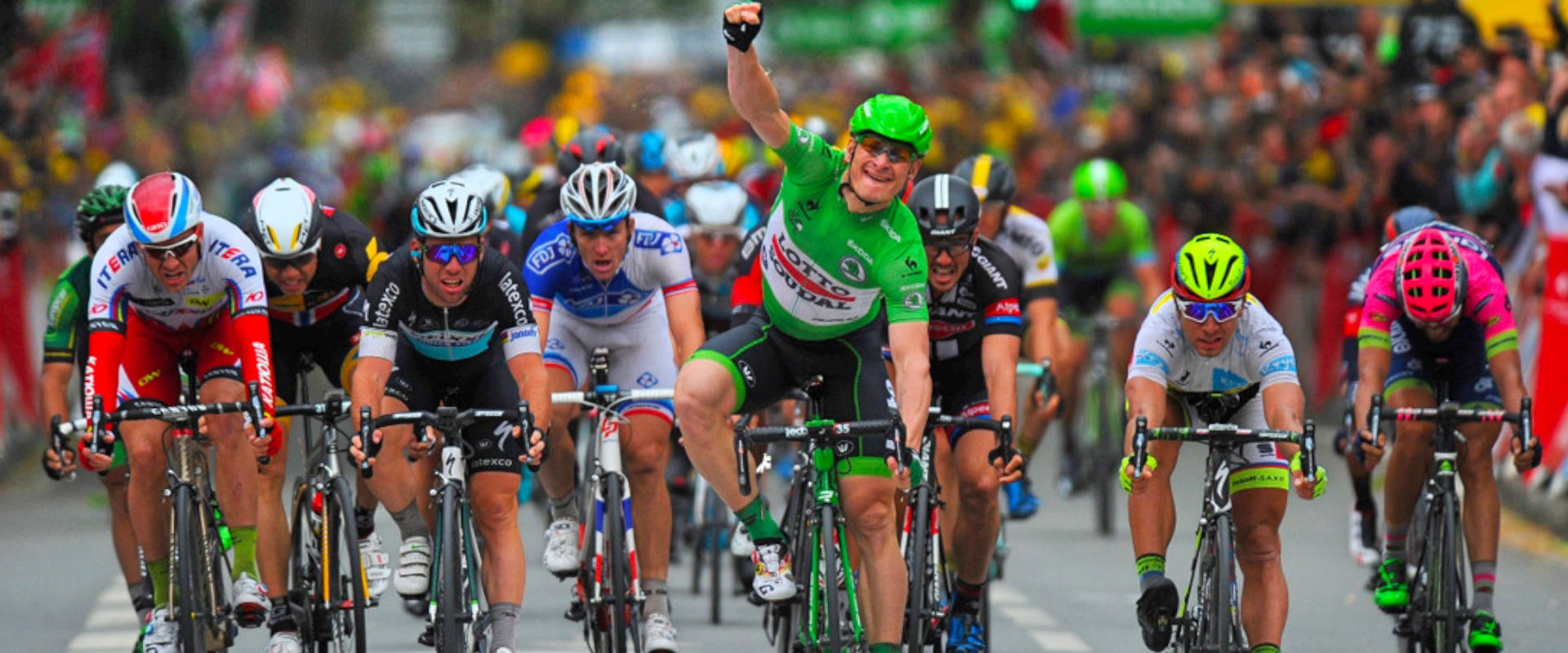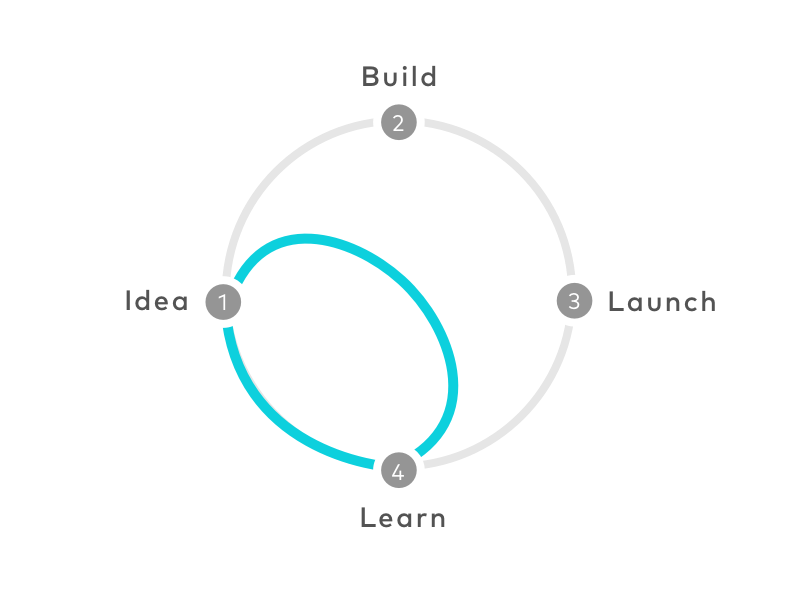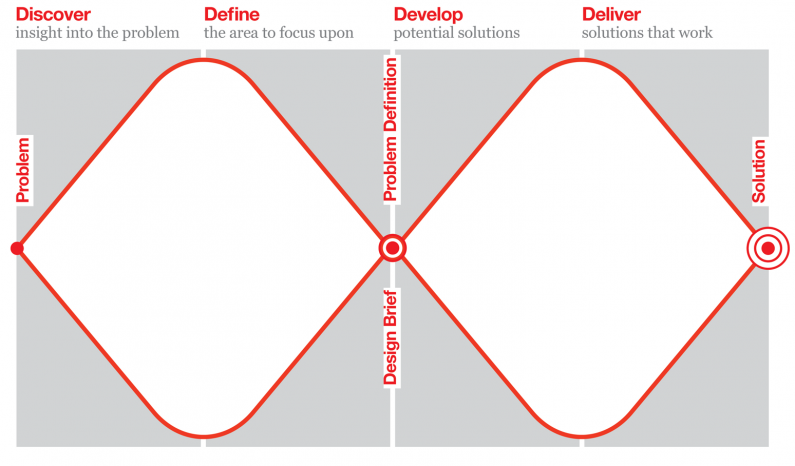Can You Run a Successful Design Sprint in a Day? We do.

Businesses are told time and again that speed is of the essence. Words like ‘agile’ and ‘lean’ ping up everywhere - even saying them makes you feel more lithe. 'Whizz’ goes our profits! ‘Whoosh’ goes our Net Promoter Score!
In keeping with this trend, Google Ventures defined a framework of building, testing and learning that neatly fits inside a five-day working week. They call it a ‘Design Sprint’.

As their framework shows, you're hacking the cycle to rapidly test ideas to create results. What was once months spent in R&D is now complete in five days. Zoom!
The Design Sprint's method gels around two principles:
An outcome-driven activity
and
A divergent/convergent process.
The former stresses the need to achieve a result. This could be through uncovering an unmet customer need or refining a business process.
The latter highlights the importance of expansive and then focused activities in an iterative format.
Notice that we’ve not mentioned the five days at all. In analysing Design Sprints we discovered the process is robust, yet time was a factor we could play with.
But why would we?
Because five days is too long to get to a result. Business’ crave outcomes, and the means to get to them. Quickly.
Hacking the Design Sprint
Five days in business is a luxury. When was the last time anyone in your organisation had time to put everything aside for a working week?
One day? Sure.
Two days? Your teeth whistle at the backlog awaiting your return.
Three days or more? People start to wonder where you've got to. You might as well have gone on annual leave - at least they'd know you're in the Bahamas and not a conference room on Bourke Street.
Oh, and this time is also needed from at least half a dozen other stakeholders too. Very few organisations readily have this ‘slow time’ available.
By observing and interacting with teams who had time on their hands, we saw Parkinson’s Law in action. When you embark on the exercises in a five day Design Sprint, there’s potential for people to overwork them. It’s tempting to go around in circles with little progress, iterating because you can.
We weren't the only ones to notice. The Design Sprint School shuffled the process to get customer collaboration happening earlier on, trimming the method to four days. Google Ventures has revisited their steps and removed a day too. AJ & Smart's Design Sprint Academy felt they could go to three days.
But that's still too long. There had to be an effective way of running Design Sprints in far less than three days. And there is.
Distilled for results
Our secret for a successful one-day Design Sprint is simple: We stick to what we need to do.
Remember, Parkinson’s Law still applies when you provide less duration. So you gotta make it count.
We buy productive time either side of a Design Sprint. Collaborative prep beforehand gives participants the opportunity to warm-up their thinking, so no-one starts the day cold. We identify a problem to create a Sprint purpose, and hit the ground running knowing what we need to get an outcome for.

The crux of the Sprint itself is the Double-Diamond from the Design Council - which is similar to working in an iterative manner. This flow remains throughout the process as a looping, exhale/inhale rhythm. Only, our day runs in a ‘hardened’ Double-Diamond manner.
Every Sprint exercise must produce an outcome to validate against the Sprint purpose. You create results as you proceed. This can get messy. But that's not a bad thing.
We make sure that people know it will be 'good messy'. Design Sprints are like this by nature.
Design Sprints are intense and messy... There is no shelter to retreat to and surprise the client with 'a-ha!' moments. What you see is what you get.
Tenny Pinheiro, Design Sprint School
We curtail time at the point where someone heads down an 'idea rabbit hole', dragging in others with them. We encourage people to go back to the original pain points, the identified issues and purpose of the Sprint. Ideas are always looped back before moving forward. We expand with curiosity, contract with focus. Validate. Expand, contract. Validate.
We work around customers not being present by 'hacking' them in. And we openly acknowledge that these create assumptions. But it also highlights gaps in knowledge - and we encourage filling these with insights.
Customers love early access to ideas regardless of fidelity. We insist that people test their ideas on each other, utilising Nielsen's 'Test with 5 Users' approach to get feedback fast. Prototypes are less precious when you've spent less time on them.
After the Sprint, participants can apply habits learnt during the day on other business problems for rapid results.
The results?
Services and products designed and made have business impact because they solve a problem. Value propositions shared and honest opinions given which gives the business focus.
More importantly, customers and stakeholders feeling like they're understood. Developing a culture of co-creation to creates "You get me!" moments. All of these come with the five-day version too, so we know we're not missing anything.
Keep focus.
The critical aspect is to not lose sight of why you’re doing a sprint in the first place.

Our approach distils the point where we collaborate. Preparation and establishing the purpose for the day is vital. Make sure to define the problem early on, otherwise you’re sprinting for sprinting’s sake. Then we take advantage of the co-created energy after the Sprint - getting prototypes and value propositions in front of the people who'll be using them.
A one-day Design Sprint is intensive. It has to be - time for key stakeholders and customers collaborating is a precious commodity. But it solves problems quickly, and that’s what matters.
Clients like the Australian Institute of Architects and Allens Linklaters have seen our design sprints in action. If you'd like to see what a one day design sprint can do for your business, contact us.


